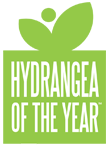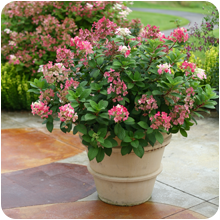LITTLE QUICK FIRE®
hydrangea paniculata
A Sweet and Petite Hydrangea That’s Fun to Grow
- Blooms reliably every year
- Earlier to flower than most
- Creamy white flowers age to deep pink-red
- Dwarf size fits easily in containers and landscapes
- No special soil required
- Strong grower in part sun to full sun
- 3-5’ tall x 3-5’ spread
- Hardy in USDA Zones 3-8
People who love hydrangeas are catching onto these gorgeous panicle types which bloom reliably every single summer, even if winter temperature dip into double negative digits. ‘Limelight’ is the classic full-sized variety that many people have come to love, but if a more petite 3 to 5 foot shrub fits your garden better, consider Little Quick Fire. Its tidy habit helps it fit easily in large containers and the middle of the border backed by taller trees and shrubs.
True to its name, it is quick to fire—meaning it’s earlier to bloom than most panicle hydrangeas and is already turning pink when others are just budding up. This makes Little Quick Fire especially well-suited to places where the growing season is relatively short, so you’ll have plenty of time to enjoy its flowers before frost.
how to grow little quick fire® hydrangea paniculata
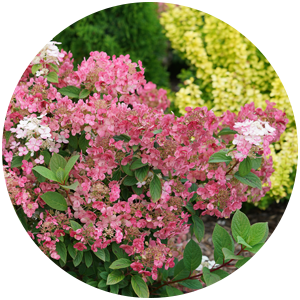
Planting
Panicle hydrangeas are far less fussy about where they will grow than some types. Think of them like any other shrub in your landscape—undemanding and easy to grow.
In USDA zones 3-7, Little Quick Fire hydrangea will be the most vigorous and produce the most flowers if it is grown in full sun. In warmer zones, some afternoon shade is preferable to prevent the flowers from burning. No matter where you live, your hydrangea will benefit from a 2-3 inch layer of mulch to keep the roots cool and moist.
Panicle hydrangeas will tolerate most soil types as long as they are well-drained. This plant doesn’t grow well in soggy soil so if that sounds like yours, you may need to improve the drainage before planting. While many types of hydrangeas prefer acidic soil (pH less than 7.0), panicle hydrangeas can live in acidic and neutral (pH 7.0) soils.
When planting, dig the hole about twice as wide but just as deep as the container it is growing in. If the roots are densely circled around when you take the plant out of the pot, loosen them up a bit to break the “root memory”. This will encourage them to grow outward instead of continuing to grow in a circular pattern.
Set the plant in the hole, making sure that the top of the roo tball is level with the top of the surrounding soil. Then backfill the hole with the soil you dug out. Press it down with your hand firmly to eliminate any big air pockets around the roots.
Lastly, water the plant again to help the soil settle. Spread some mulch around the base of the plant, taking care to keep it from touching the plant’s stems. The mulch will help to retain soil moisture and protect the roots during winter.
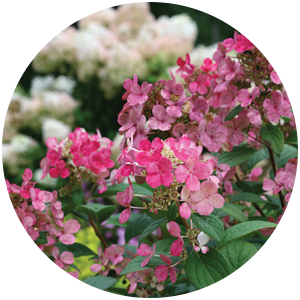
Pruning
Panicle hydrangeas like Little Quick Fire produce their flowers on the current season’s stems. That means there’s no risk of the buds being damaged by winter—a useful trait for northern gardeners. As long as you prune them before late spring, you’ll see flowers that year.
You could prune Little Quick Fire hydrangea in late fall once the plant goes dormant if you don’t want to keep its flowers for winter interest. We typically prune them in early spring so we can enjoy those blooms as long as possible. Cut the branches back by about 1/3 of their total length. This will help to create a fuller plant with larger blossoms. No other pruning should be needed throughout the growing season.
Early spring is a good time to scratch some granular plant food into the soil. We typically use one formulated for roses since hydrangeas enjoy similar nutrients. Doing so will encourage them to start the season off strong. No additional feeding is necessary.
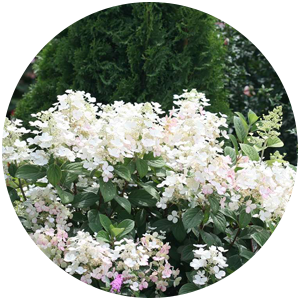
Uses
Little Quick Fire hydrangea’s smaller size helps it easy to fit into most landscapes. You could plant a row of them along your home’s foundation where they won’t grow too large to block your windows. You could also plant them as a flowering hedge in front of a row of evergreens for all-summer color. It blends beautifully into perennial borders, too.
You could also try Little Quick Fire in a large container on your deck or porch. If you keep it pruned every year, it should be able to live in that container for many years without outgrowing its space. Just be sure if you plan to do so that you live in zones 5-8, since it will struggle to overwinter in a container in colder zones.
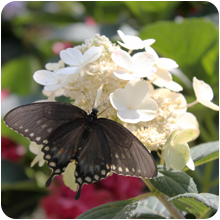
This shrub produces panicles that are comprised of both sterile and fertile flowers, as compared to full mophead hydrangeas which have few fertile blossoms. As a result, you can expect pollinating bees and butterflies to be frequent visitors when Little Quick Fire is in bloom.
Since it blooms on next year’s growth, you won’t hurt this hydrangea at all if you cut its flowers in summer or fall for fresh and dried bouquets or to use in craft projects. And since there is such an abundance of flowers produced, you won’t even miss the ones you cut.
top 3 reasons to grow Little Quick Fire® hydrangea
IT BLOOMS RELIABLY EVERY SINGLE YEAR
No more crossing your fingers and hoping your hydrangea will bloom this year. Little Quick Fire is a sure thing!
IT’S AS EASY TO GROW AS ANY OTHER SHRUB
Finicky is not in this hydrangea’s vocabulary. You’ll find it is one the easiest hydrangeas you’ll ever grow.
IT FITS ANYWHERE AND EVERYWHERE
At just 3 to 5 feet tall and wide, you can grow this hydrangea just about anywhere in your landscape without it taking over.
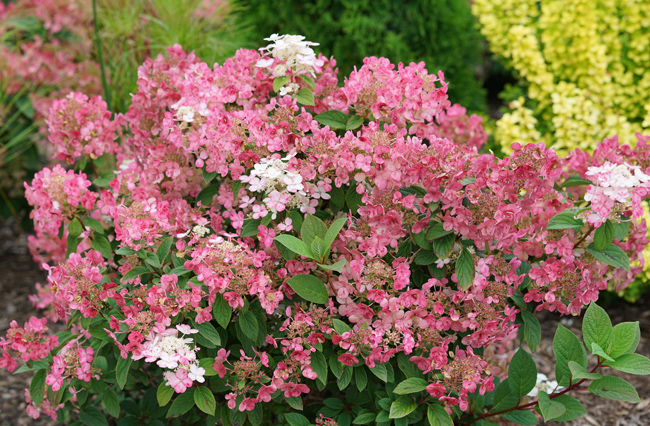
Little Quick Fire® Hydrangea paniculata ‘SMHPLQF’ USPP 25,136, Can 5,406
